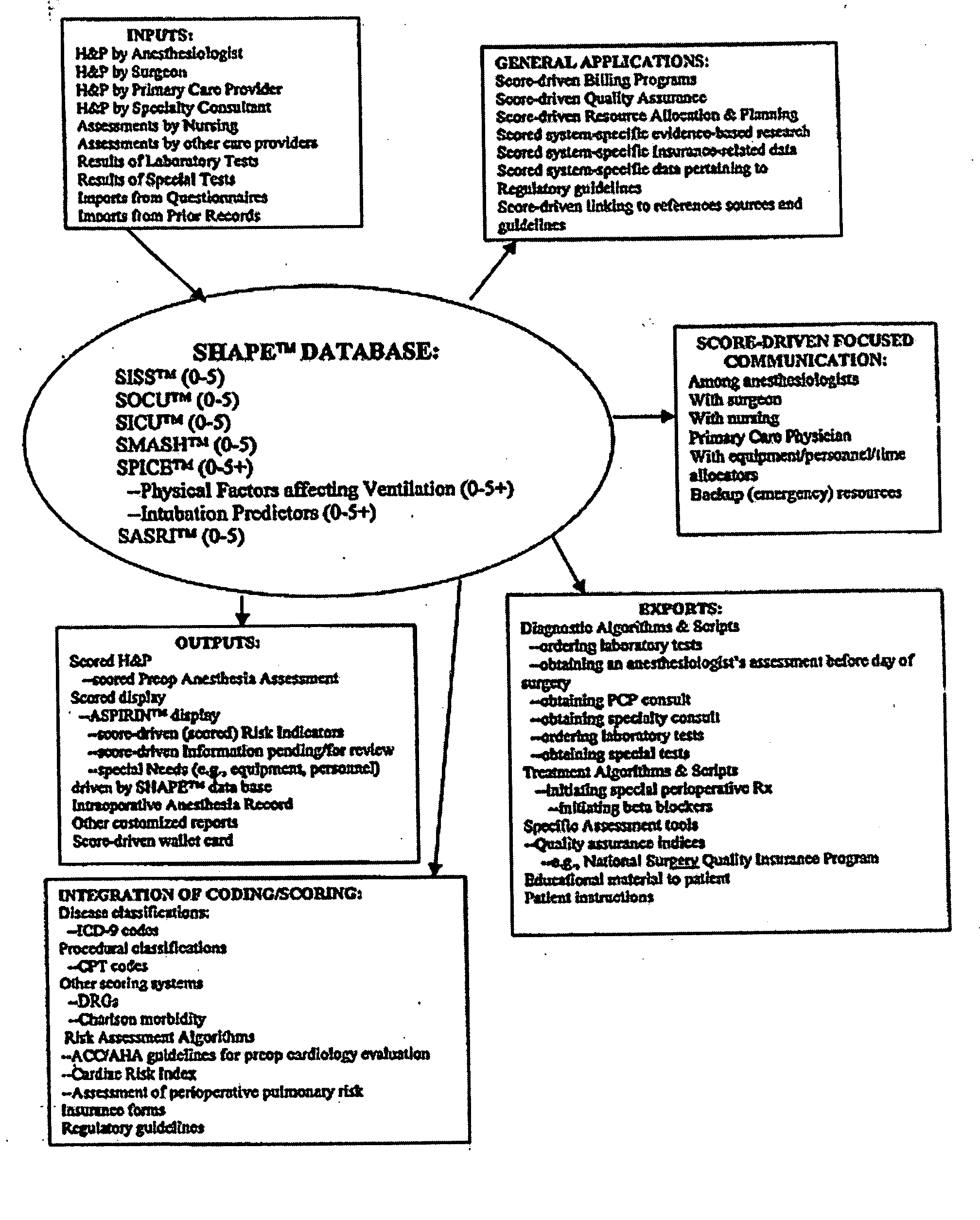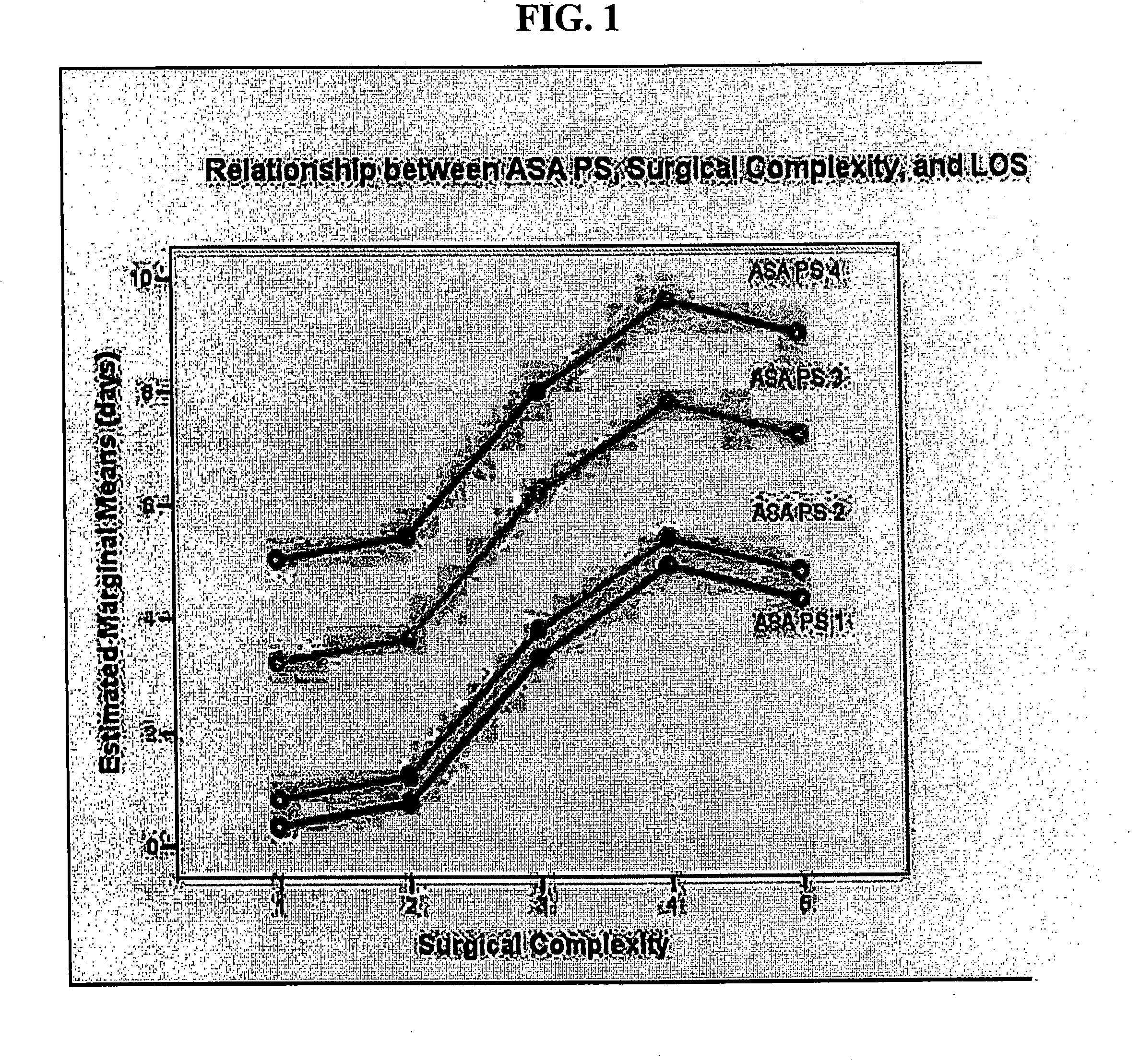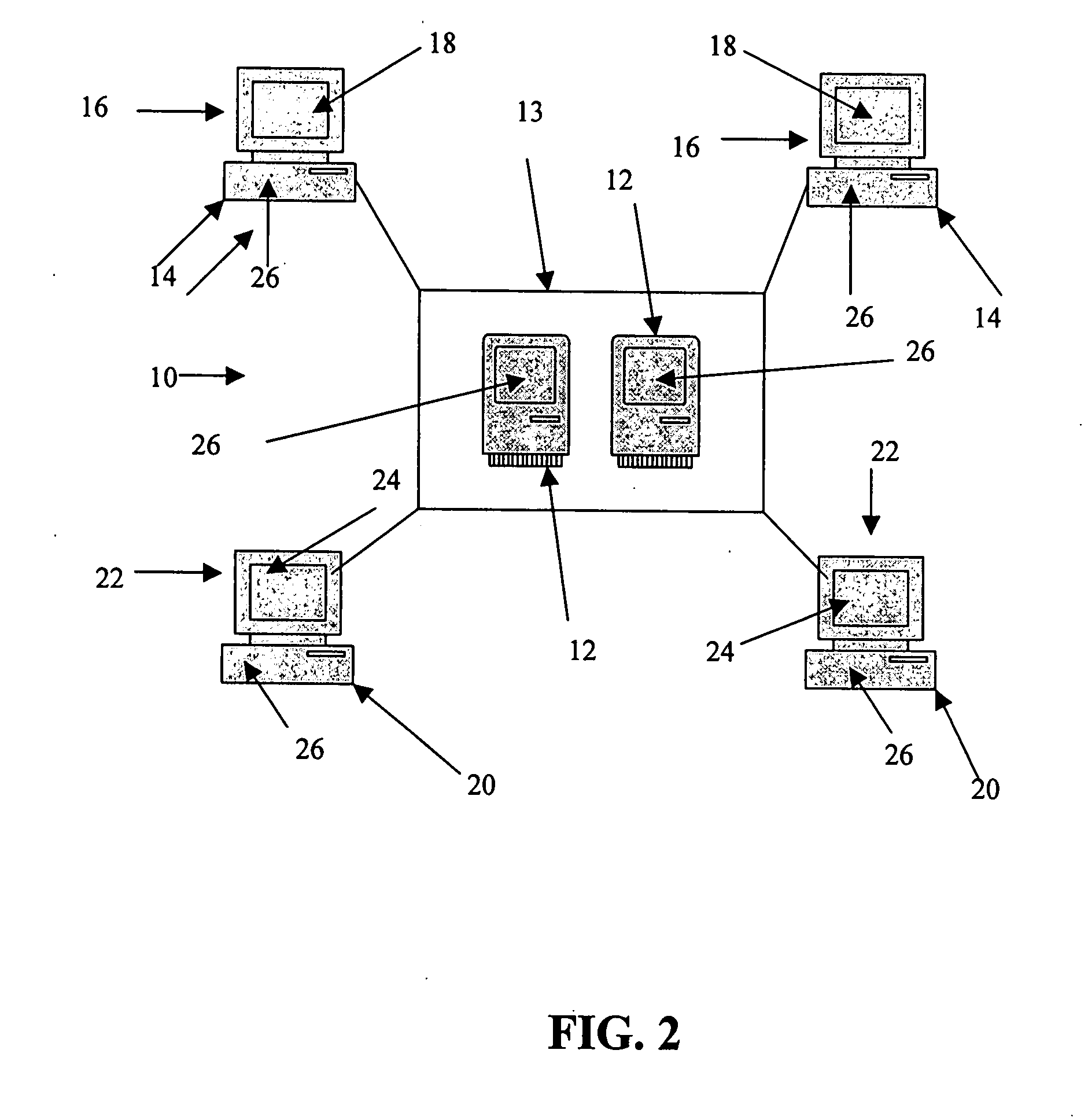Method and system for assessing, quantifying, coding & communicating a patient's health and perioperative risk
- Summary
- Abstract
- Description
- Claims
- Application Information
AI Technical Summary
Benefits of technology
Problems solved by technology
Method used
Image
Examples
Embodiment Construction
[0083] The detailed embodiments of the present invention are disclosed herein. It should be understood, however, that the disclosed embodiments are merely exemplary of the invention, which may be embodied in various forms. Therefore, the details disclosed herein are not to be interpreted as limiting, but merely as the basis for teaching one skilled in the art how to make and / or use the invention.
[0084] Referring to the various Tables and Figures accompanying the present disclosure, a multi-dimensional system and method for assessing, consistently coding, quantifying, displaying, integrating and communicating information relating to patient health and perioperative risk that addresses each of the factors described above is disclosed. Namely, the present system and method provides for (1) a new score for the physical condition of the patient; (2) a score for the degree of expected surgical risk and invasiveness; and other vital assessments of perioperative complexity, including score...
PUM
 Login to View More
Login to View More Abstract
Description
Claims
Application Information
 Login to View More
Login to View More - R&D
- Intellectual Property
- Life Sciences
- Materials
- Tech Scout
- Unparalleled Data Quality
- Higher Quality Content
- 60% Fewer Hallucinations
Browse by: Latest US Patents, China's latest patents, Technical Efficacy Thesaurus, Application Domain, Technology Topic, Popular Technical Reports.
© 2025 PatSnap. All rights reserved.Legal|Privacy policy|Modern Slavery Act Transparency Statement|Sitemap|About US| Contact US: help@patsnap.com



